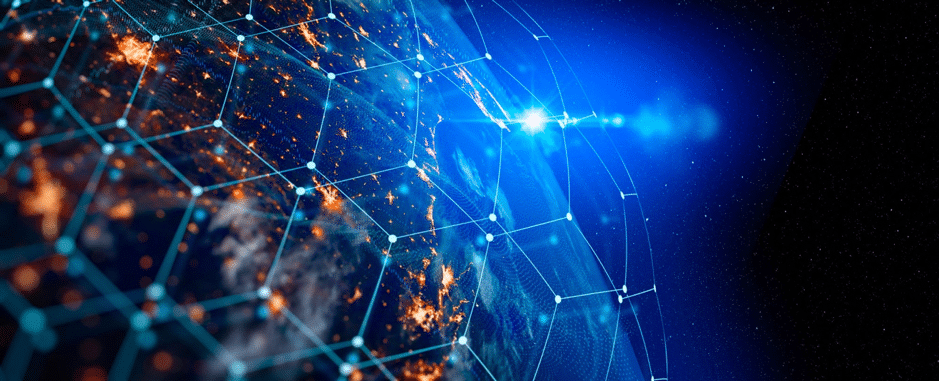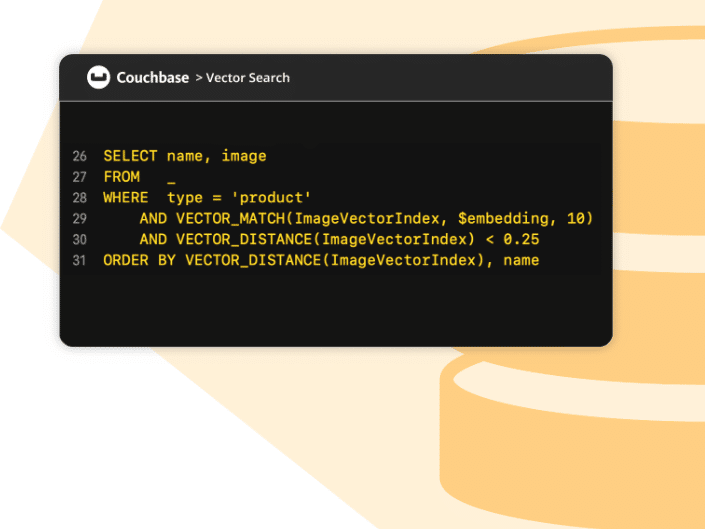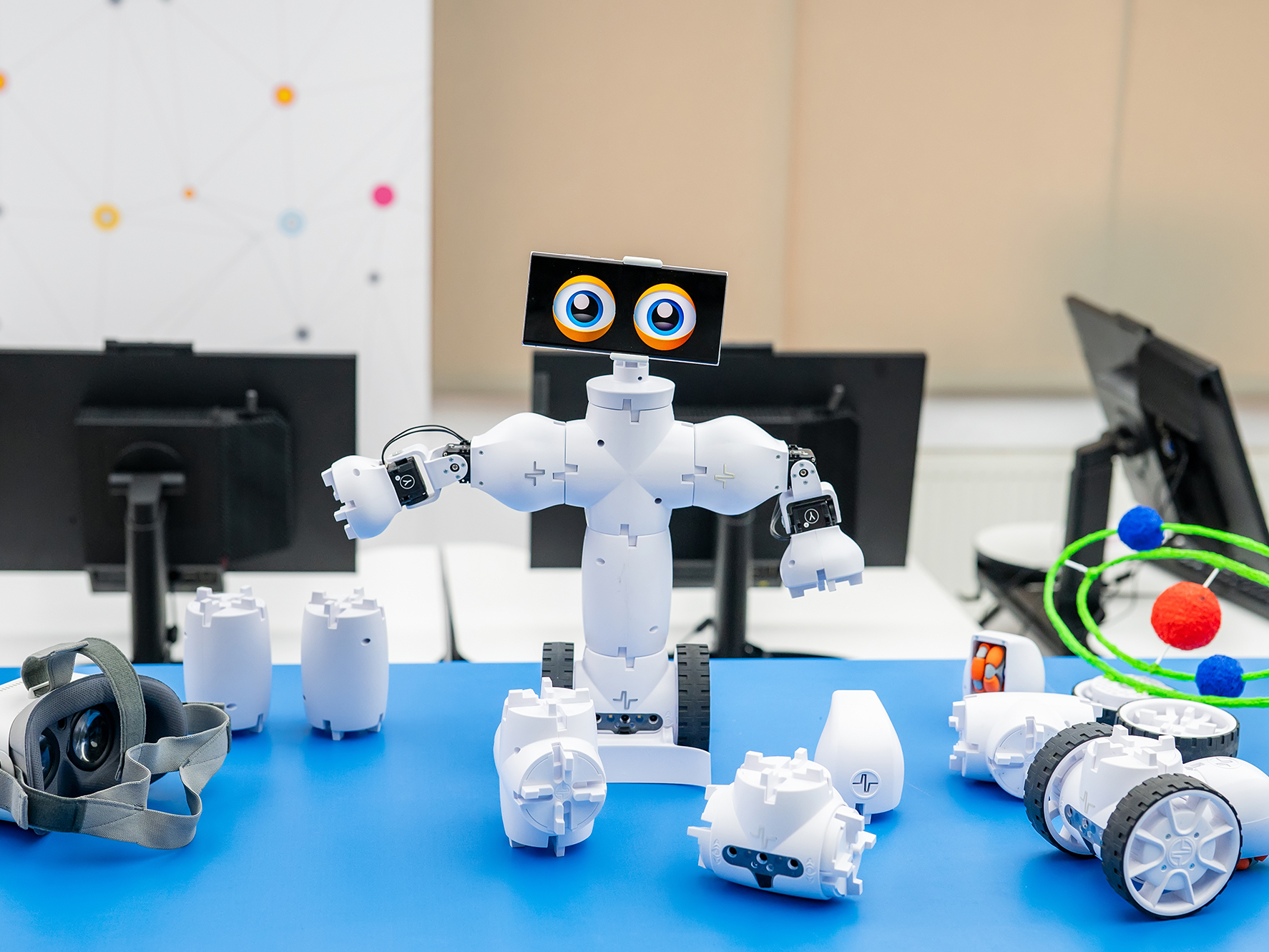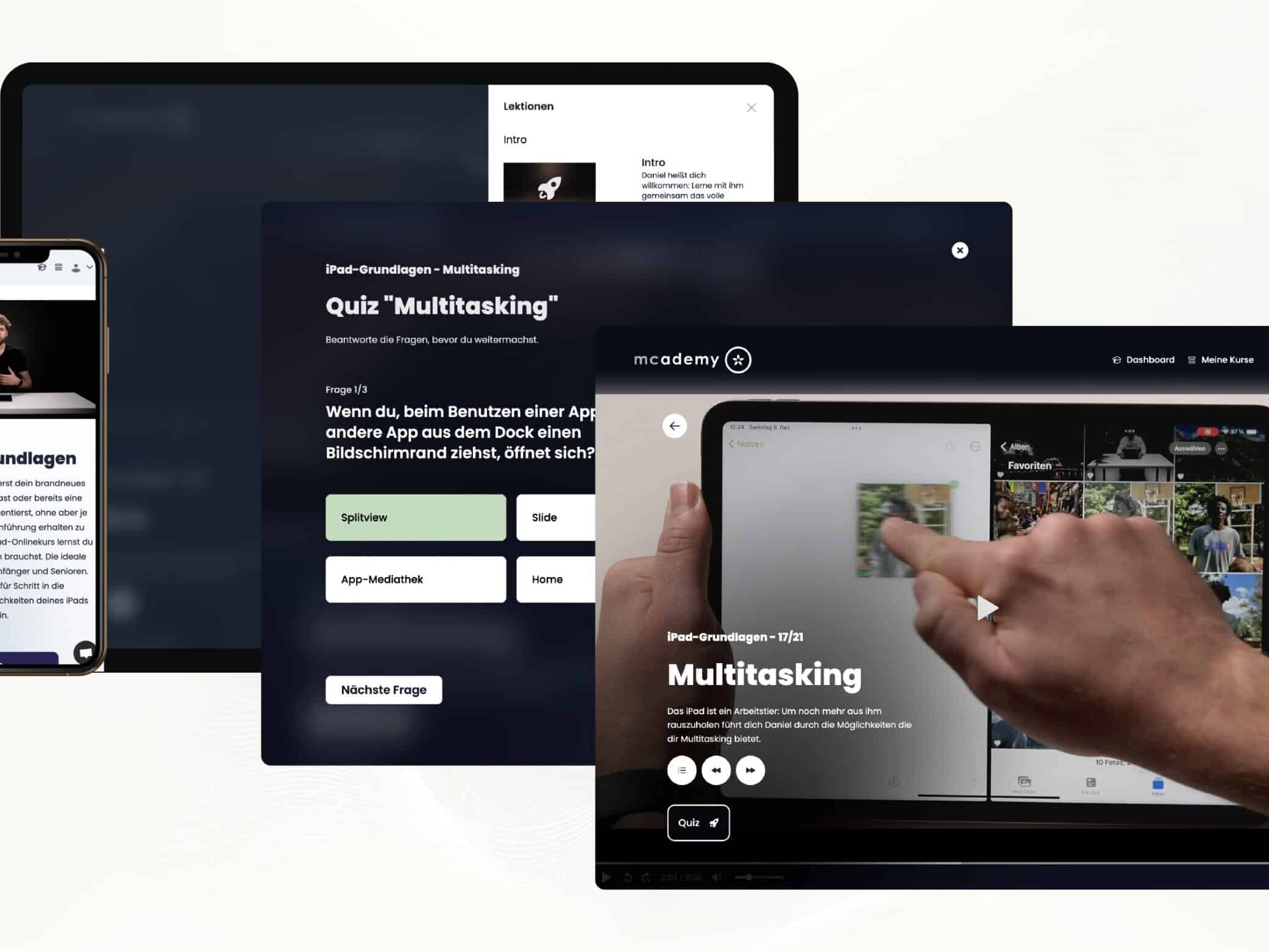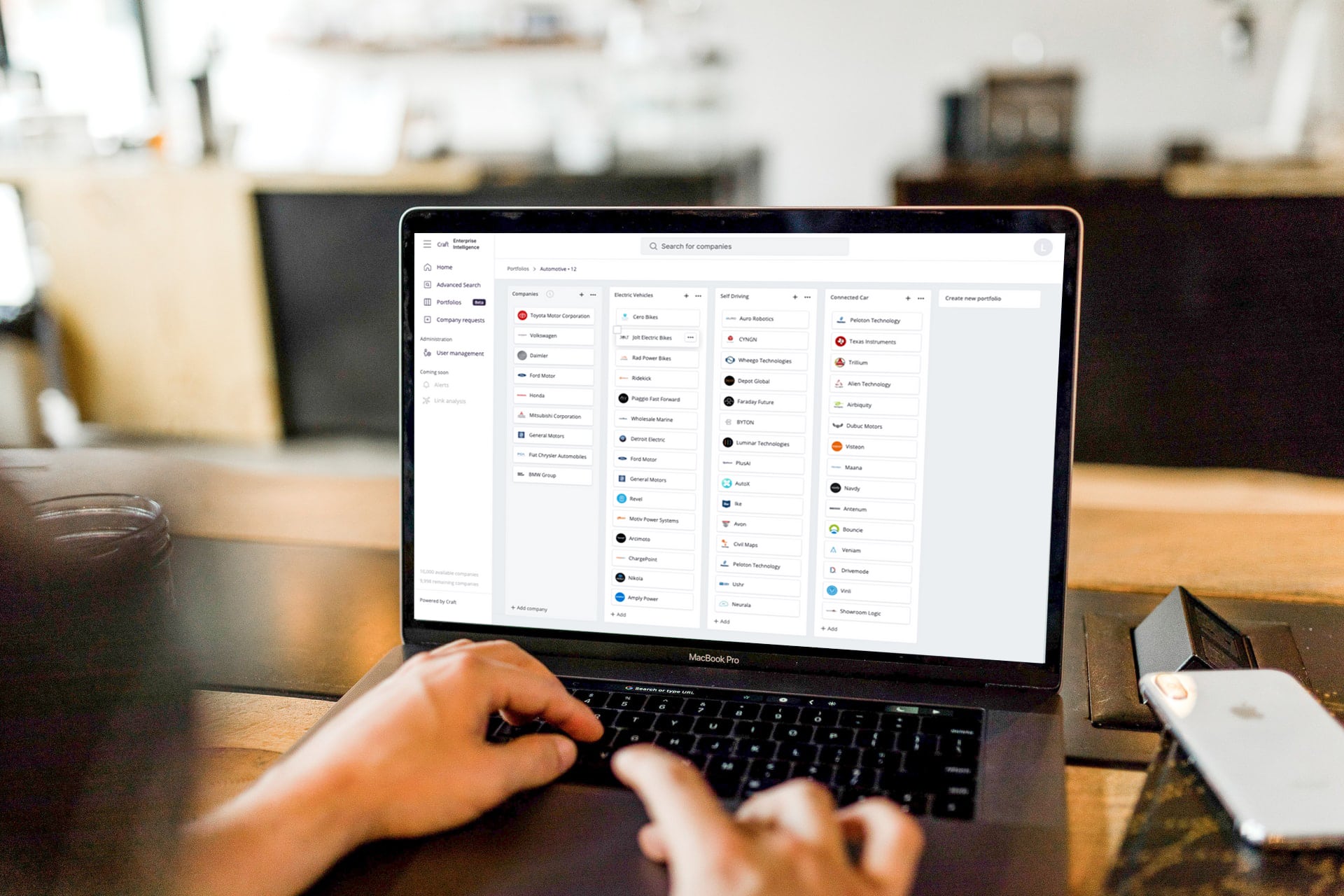Getting to grips with modern data management
Getting to grips with modern data management
How organisations are now taking control of their exploding data growth while cutting 70% of enterprise storage, backup, and cloud costs.

By Kewal Gupta
28th January 2022
Until recently, enterprise data storage mainly consisted of disk-based systems for immediate availability and tape for offline backup. Rarely used data could be stored on lower tiers of disc (often spinning HDD’s) to save cost – but this demanded layers of redundancy and RAID solutions to guarantee access to that rarely/little-used data. With in-house disk-based storage systems employing layers of solid-state architecture, tiers of spinning disks and complex management software, many organisations faced eye-watering (and ever-increasing) data storage costs.
At the mercy of increasingly sprawling storage systems, IT managers and their teams found they had dwindling insight into the nature and use of data under management. Ultimately, many groups were compelled to treat all data similarly, no matter if it was business-critical, temporary, or legacy. Anything else was too risky.
Exploding data growth
Today, this loose approach to data storage can no longer be tolerated. Organisations are facing explosive growth in unstructured and structured data from all sides – and they are increasingly expanding the number of silos and classes under management. Many organisations are employing a mix of private cloud object storage, public cloud file and object storage, and disk-based solutions. Additionally, most teams are actively using a hybrid cloud architecture to provide them with all the features of native cloud solutions.
Naturally, the more significant vendors have created intelligent storage management software solutions that can dynamically control data orchestration on storage classes. However, these storage management systems lack the intelligence and flexibility many organisations demand. Often, the software will lead the customer into a vendor lock-in situation or fail to deal comprehensively with hybrid cloud architectures. This situation can lead to even more complexity for the customer’s data storage team – with increasingly complex software layers. Worse still, customers face software customisations to deal with outlying data management use cases.
The case for independent data management
Today, many organisations are turning to independent data management solutions that can help them by automatically analysing, understanding, and moving data to the most appropriate tier – no matter if the storage is a mix of vendor technologies or cloud-based systems.
These solutions are described as Data Management rather than Storage Management. They orchestrate your data across all storage classes – and they intelligently choose the most appropriate storage system for each piece of data.
Modern Data Management Solutions such as those offered by Komprise enable data to move in the background without changing the availability or access to that data for users, applications, and systems. Additionally, the technology allows the data to be directly accessible within the cloud – without requiring access through the original file structure. This approach speeds data access and frees it from proprietary storage technology – while giving access to the full compute power and elasticity of the cloud alongside native services and applications.
Freedom to access data independent of its storage silo
The Komprise solution also gives organisations transparent access to tiering that teams can control with user-defined policies. It allows ‘cold’ data to be automatically moved to cheaper or slower storage – while ‘hot’ data is retained in faster storage for rapid access.
All of this smart data management means that users and applications alike see no change in the file structure. Their data is right where they expect it to be – yet the organisation saves considerable resources by leveraging the most efficient storage architectures.
The Komprise solution manages to move data, leaving behind an industry-standard symbolic link that is dynamic and resilient. These links appear the same as the original data file and retain the same permissions and attributes. Users and applications can open and access the moved files from their original location precisely as before, without any changes.
Data back-ups are minimised as the Komprise system retains only the ‘hot’ or essential data on your primary storage – dramatically shrinking the data footprint.
Access to cloud data without additional complexity
Unlike data virtualisation, storage tiering or global file storage gateways, the Komprise solution doesn’t move data in a proprietary format, and it will not get in front of hot data. This unique approach frees organisations from expensive licensing requirements for cloud access, allows cloud-native data analytics tools – and speeds up the delivery of hot data.
How Pfizer saved 75 per cent on storage and cloud migration costs
One organisation that deployed the Komprise solution with significant effect is leading pharmaceutical company Pfizer, which operates a global heterogeneous NAS environment.
The Pfizer system had 5 petabytes of cold and unstructured data alone, of which 64 per cent had not been accessed in over two years. Pfizer’s team needed to move the data while maintaining visibility, an ongoing strategy for applying business rules for analytics, and better insight into the data it was hosting.
“What sets Komprise apart compared with other solutions is the end-to-end process of analysing and moving data,” said Caitlyn Possehl, Global Strategic Alliance Leader at Komprise. “You can use Komprise to scan all your data, analyse costs and create business rules and then Komprise will act automatically against those rules.”
Pfizer saved over 75 per cent on storage and cloud migration costs with the Komprise solution. Cost savings came from removing manual data management and having Komprise intelligently and automatically move cold data from high-priced, on-premises storage to more cost-effective storage on Amazon S3. Pfizer can still directly access the data in AWS as S3 objects natively without lock-in or fees. Read the full case study here.
Learn more about the Komprise solution
Komprise is a cloud data management-as-a-service that frees you to quickly analyse, mobilise, and access the correct file and object data across clouds without shackling it to any vendor.
In the UK, Komprise is working in partnership with Tech Data to help organisations evaluate the technology.
Channel Partnerships can set up a meaningful and tailored demonstration that will show the Komprise solution working for a real-world evaluation.
Contact Channel Partnerships directly by calling: 01923 618099
Or email: info@channel-tools.biz
Latest articles
July 31, 2024
Channel Tools welcomes Couchbase to its Portfolio to Enhance Data Management Solutions
Shape Robotics is committed to revolutionising STEM education through innovative robotic solutions.
July 11, 2024
Shape Robotics: Leading the Way in Educational Robotics
Shape Robotics is committed to revolutionising STEM education through innovative robotic solutions.
June 4, 2024
Embracing the Apple Ecosystem with mcademy: A Deep Dive into Innovative Learning
mcademy, an online learning specialist tailored to Apple technology, offers a learning experience…
Join our Partnership Program
There are many benefits partnering with us. Simply complete the form at the bottom of this page to discuss how the program can sky-rocket your visibility in any technology market place. We have huge experience in the creation of new channels – and we can create introductions, leads and business opportunities for your sales teams.
Want to know how a Channel Partnership could benefit your business?
Complete the form below and one of our team will call you back:
Understanding nuanced meaning in legal documents
Understanding nuanced meaning in legal documents
How AI is revolutionising the granular analysis and comparison of meaning within contracts and complex documents.

By Kewal Gupta
14th January 2022
Why is semantics important?
Semantics is described as the root meaning of text within any given document or speech. A complex document such as a contract will be open to misinterpretation where the meaning could be obfuscated within layers of overlapping clauses.
For any layperson attempting to appreciate a contract’s content fully, a specialist or lawyer will be essential to decipher meaning at every level. Once meaning has been identified, applying a viewpoint to that meaning can also be open to misinterpretation.
The role of semantics in the legal profession
When presented with a legal contract, most of us will read and re-read each clause to understand the ‘meaning’ behind the text. Often described as ‘legalese’, contractual clauses can seem overly complex to the layman, consisting of overriding sentences that frame the clause and define boundaries within which the contractually obligated parties can operate.
Whenever a contract is created or amended, all relevant parties should evaluate the text – often at a granular level – to fully understand the document’s implications. This evaluation can take a lot of time and expense for lawyers or your legal specialists.
Although many firms will have qualified professionals supporting their people with analysis, comparison, and investigation services, they can often miss the ‘meaning’ behind a phrase. This meaning and how it relates to the client are at stake. Usually, only the client can interpret the true essence within a contractual term – but only if they have the facts (and meanings) clearly laid out in front of them, and this can take a considerable amount of time, cost and effort.
How automation has attempted to improve contract analysis
Since the early 1980s, firms have attempted to introduce automation to detect and understand the meanings within contract documents. These systems mainly use rules-based workflows alongside large libraries to identify and alert users to pre-defined issues within documents. These systems can be cumbersome and complex, demanding constant updates and manual intervention to guarantee any measure of success. Additionally, these systems often fail when multiple languages and regional variations in law are applied.
However, the need for a solution to the problem of document analysis and semantic recognition continues to grow.
The considerable volume of documents created in the legal domain demands more sophisticated tools supporting efficient and intelligent information gathering. Document research and management systems are now using strategies based on machine learning to classify, filter and extract context-based content. These systems help users identify relevant structured portions of legal text semi-automatically – such as contract clauses.
However, while knowledge management systems can deliver automated detection of matching text sections, they often fail to identify meaning – or the change of purpose.
From Machine Learning to AI – the solution to rapid semantic text analysis
The application of artificial intelligence (AI) to the problem of identifying and comparing semantic meaning has, at last, started to gain ground. Companies such as ThingsTHINKING from Karlsruhe have developed technologies over the previous 14 years that can already identify and compare semantic meanings within complex legal documentation.
The Semantha platform from ThingsTHINKING delivers fully automated semantic processing for legal, contractual, and complex documents. It can be applied to many use cases such as CV matching, NDA analysis, contract review, contract renewals, international contract translation and more.
The team at ThingsTHINKING describe their Semantha platform as ideal in situations where there is “too much text and not enough time”, – which sums up the situation most lawyers and legal teams find themselves in every day.
The Semantha interface allows users to upload multiple documents (such as contracts) to an interface for analysis. These documents can be in different formats (Word or PDF) and various languages. The user can then run a comparison or search against the records to find and identify matching sections of text that imply similar (or the same) meaning.
During a recent webinar by the Semantha team with automation integrations specialists UiPath, a search was conducted for the phrase “All genders have equal rights and obligations” across a selection of constitutions from countries such as Canada, India, China, Mexico, the USA and Europe. Semantha instantly identified clauses within each constitution that matched the same meaning – irrespective of language.
The Semantha platform can easily compare the matching phrases for similarity matches with adjustable thresholds. It makes these comparisons and identifies matches in semantic meaning despite different wording and terms in each document.
Perhaps just as importantly, the Semantha platform quickly identifies if a close match is not available between documents – helping users to discover if an expected intention in meaning is missing from within a document.
ThingsTHINKING is packaging the Semantha platform for firms to apply to their internal systems either as a stand-alone tool – or as an integration to other document management solutions using their extensive API. Semantha works ‘out of the box’ with learning required, thanks to the AI engine behind the solution.
Identifying meaning vs application of viewpoint
Although the Semantha platform can quickly identify the presence of an expected item of text with specific meaning, this is not enough for most organisations. We might already know that a phrase or clause is essential – and it is significant that the platform identifies the presence of this phrase – but what about a client’s specific viewpoint of that phrase? For example, a clause specified within a contract may stipulate a penalty. Our client might believe that this penalty is unacceptable – and we need the AI to help us identify and highlight the inclusion of this unacceptable condition. In this case, the user can tell Semantha via a simple interface that a particular phrase is ‘Bad’. In addition, the user can apply a ‘Good’ phrase – so anytime Semantha finds an item of text similar to the ‘Bad’ phrase, it will suggest or use the ‘Good’ alternative.
By applying your alternative phrases to a document, the Semantha platform will learn the user’s viewpoint and apply these learnings to any records available to the platform.
Semantic analysis automation in document management
Working with automation tools such as UiPath, users can integrate the Semantha platform to their document libraries such as SharePoint and any gateways where documents are arriving at the organisation (such as email). Semantha can automatically scan incoming documents looking for semantic meanings that it knows to highlight – triggering an alert and actions that the user can easily manage.
Users can decide on the level of integration they want within their document management workflows – and they can maintain human intervention where specialists need to evaluate semantic changes in contracts. As they become more confident in the accuracy of the Semantha platform, they can rely increasingly on automation and AI to deliver accurate results far more quickly.
Getting Semantha on board
For anyone dealing with many legal documents such as contract renewals, having a system like Semantha onboard could save the organisation many hundreds of hours in analysis. Although Semantha is easy to install and test within your environment, a demonstration is recommended to appreciate the platform’s advantages and features.
Channel Partnerships, working in partnership with Tech Data is here to help organisations evaluate the technology.
Channel Partnerships can set up a meaningful and tailored demonstration that will show the Semantha platform working to provide you a real-world evaluation.
Contact Channel Partnerships directly by calling: 01923 618099
Or, email: info@channel-tools.biz
Latest articles
July 31, 2024
Channel Tools welcomes Couchbase to its Portfolio to Enhance Data Management Solutions
Shape Robotics is committed to revolutionising STEM education through innovative robotic solutions.
July 11, 2024
Shape Robotics: Leading the Way in Educational Robotics
Shape Robotics is committed to revolutionising STEM education through innovative robotic solutions.
June 4, 2024
Embracing the Apple Ecosystem with mcademy: A Deep Dive into Innovative Learning
mcademy, an online learning specialist tailored to Apple technology, offers a learning experience…
Join our Partnership Program
There are many benefits partnering with us. Simply complete the form at the bottom of this page to discuss how the program can sky-rocket your visibility in any technology market place. We have huge experience in the creation of new channels – and we can create introductions, leads and business opportunities for your sales teams.
Want to know how a Channel Partnership could benefit your business?
Complete the form below and one of our team will call you back:
Asset Tracking has come of age
Asset Tracking has come of age
How asset tracking will be used in 2022, and how modern wireless IoT tracking technologies compare.

By Kewal Gupta
17th December 2021
Asset tracking in 2022 will deliver so much more than simply knowing the location of resources and materials. Real-Time Location Systems (RTLS) already use a wide range of IoT devices and platforms to deliver intelligent asset insights across almost every vertical and market sector.
Businesses of every scale are recognising that asset tracking solutions can help them with their automation and business transformational goals, resulting in improved efficiency and productivity.
Asset tracking solutions are already providing invaluable insights into process efficiency when applied to resources, machinery, equipment, materials, and products.
Vehicle tracking is perhaps the most mature asset tracking use case that many will be familiar with. Telematics and vehicle tracking has also experienced a revolution in recent years with increased accuracy, greater resilience and larger data packets being broadcast. Businesses like Microgenie use GPRS enabled devices to allow full scale fleet tracking and telematics solutions. Sophisticated algorithms supporting OTA configuration of independent frequencies for geo-location and data upload, while in motion or static. Solutions are GPS enabled for outdoor precise geo-location, with the ability to fall back to GSM cell ID positioning when GPS is not available.
In general, IoT asset tracking platforms are being deployed at increasing scale across manufacturing, warehousing, transport, retail, hospitality, healthcare, military, and many other sectors to gain insights into asset status. Data from these platforms is being sent back into workflows to deliver improved processes and cost savings.
New systems are also helping to bring multiple asset tracking devices and their technologies under the control of a single platform, so business owners can more easily monitor a wide range of assets and resources. Platforms such as the IoT MicroGenie help businesses monitor and control almost every IoT tracking device from security systems and lighting to condition monitoring. It does this by acting as an IoT Hub, taking control of IoT devices and allowing users to gain actionable insight, management and control over their entire estate.
Now, Channel Partnerships in collaboration with Tech Data is helping organisations at every scale take full advantage of the latest innovations in asset tracking and IoT. The partnership brings together the leading platform and device manufacturers to help organisations solve their workflow challenges – from sophisticated telematics solutions to asset wayfinding and social distancing.
The benefits of asset tracking in 2022
These are among the first, and perhaps most valuable, effects of being able to monitor asset location and react in real-time. Asset tracking can make an instant impact on:
Inventory management
Business owners can know exactly how many pieces of inventory they have in stock, where they are and their condition in real-time.
Equipment maintenance
Organisations can arrange equipment maintenance schedules based on use (often measured in distance, time, and performance history) rather than via calendar dates.
Purchasing decisions
Accurate stock levels can be reported to help managers avoid over purchasing. Equally, a business can more accurately estimate stock purchasing requirements when inventory data is aligned to real-time stock levels, equipment availability and usage rates.
Compliance
Asset tracking platforms can automatically deliver historical data to help document compliance against applicable regulations.
Safety and security
Asset tracking deployments can be augmented with geofencing capabilities to limit or control access to sensitive or hazardous areas and materials.
Loss prevention
Geofencing settings applied to assets can alert managers when valuable assets move outside a predefined area. Additionally, workers can more easily locate an item of machinery or equipment within a large workspace or estate.
Customer experience
Accurate asset tracking can improve order picking, shipment processing and delivery timeframes – resulting in fewer customer issues, returns and cancellations.
Industry examples of asset tracking
Asset tracking platforms are increasingly being deployed to help organisations improve efficiency and productivity. Essentially, by tracking assets with greater accuracy and by leveraging greater insights into the condition of those assets, organisations can greatly improve performance.
The growth in asset tracking IoT devices and their related platforms and technologies is driving a revolution in organisational improvements, thanks to the ability to accurately track the flow of materials and people within an environment.
Here are some examples of how modern asset tracking and IoT platforms are changing the face of business today:
Supply chain management
Sensors with temperature-reading capability can document those goods in transit are always kept in optimum conditions. Additionally, asset tracking can support the chain of custody and avoid costly claims alongside accurate compliance reporting.
Manufacturing & Warehousing
The real-time reporting of assets within a process can identify potential bottlenecks and optimise the movement of goods and materials – as well as people and resources.
Accurate reporting of asset positions within a warehouse (including height) can help improve picking. Additionally, measurement of dwell times can streamline order processing and improve operational efficiency.
Healthcare
Asset tracking across a hospital estate makes medical equipment easier to locate, streamlining wait times and avoiding critical situations where essential equipment cannot be located.
Wireless asset tracking technologies compared
There are several location-tracking and communications technologies that can be applied to asset tracking sensors. Beacons and tags need to be compatible with your chosen platform’s digital standards, but in 2022 these are increasingly becoming agnostic – many platforms can accommodate devices that use almost any of the available technologies.
Each communication technology has its strengths and weaknesses, so potential buyers need to be aware of the various features and where each is best applied. Often it is best to gain the advice of your platform provider. A consultancy-led approach will provide you with more insights and recommendations – but the following outline might help when entering a discussion about the various options:
RFID for asset tracking
Radio-Frequency Identification, or RFID, uses radio waves to broadcast and detect an asset’s location. There are two main types of RFID – Active and Passive.
Passive RFID is not typically used for asset location purposes since devices using it are not equipped to broadcast their location.
Active RFID tags have their own power supply and can broadcast a signal. The assets’ location is calculated by measuring the signal strength as the tag moves around an environment.
Strengths of RFID in asset tracking
With RFID, no line-of-sight (LOS) is needed, and RFID signals are multidirectional. RFID delivers a signal that is robust, stable and resistant to interference. Additionally, RFID signals are easily picked up by readers and sensors.
RFID chips are usually compact and can be integrated with almost anything, making them ideal for discreet applications and portability.
Weaknesses of RFID in asset tracking
RFID signals are easily intercepted with an RFID reader, making them unsuitable for applications that demand data security and privacy compliance.
RFID is also an older platform with poor standardisation – making it more complex to integrate into existing platforms.
Ideal use cases for RFID in asset tracking
- Demanding environments and harsh conditions
- Discreet application and smaller items
- Standard asset tracking applications involving inventory, warehousing, shipping, etc.
- Simple access control solutions
Bluetooth Low Energy (BLE) for asset tracking
Bluetooth Low Energy (BLE) has quickly become one of the more popular communication technologies in asset tracking. BLE offers a wide range of features, and its growing popularity has ensured a vast ecosystem of devices and platforms that support it. BLE offers low energy use, interoperability, and stability.
Like RFID, BLE establishes the location of an asset by measuring signal strength – however, it can also geolocate based on the proximity of other BLE sensors within an array. Indeed, the accuracy of location data is improved by having more devices within a single environment.
The extremely low power consumption of BLE devices means that batteries in beacons and tags can last for five years or more, depending on the settings used. BLE also functions extremely well in both indoor and outdoor environments.
BLE has been adopted by the IoT asset tracking industry as a firm favourite, and as such it has been standardised to work with mobile devices including phones, tablets, and computers along with other consumer and industrial goods.
A major reason for its attractiveness as a platform for asset tracking is the enormous global penetration of BLE as a standard across a huge range of devices. Its ability to interact with phones, tablets and computers automatically creates an enormous network that BLE can leverage.
Strengths of BLE in asset tracking
Since BLE is already installed within millions of consumer devices, it can be used by anyone with a modern smartphone or tablet that has a suitable application installed. There is no need to buy additional hardware, which makes the cost of BLE significantly lower than RFID.
BLE can be adopted for use with sensors to report temperature, motion, vibration, impact, humidity, and more alongside its native location and positioning technology. It can be easily integrated with other technologies and cloud services – and easily deployed for simple use cases that can expand in the future as business needs to grow.
Weaknesses of BLE in asset tracking
Scaling BLE and preserving accuracy requires adding transmitters to create a denser network, which can be expensive in large deployments.
Ideal use cases for BLE
- Anything that demands tracking and location data such as wayfinding and navigation.
- Mapping workflows and asset movements through a business process
- Asset location in larger environments such as hospitals, schools, campuses, and airports.
- Temperature-sensitive asset tracking, such as cold-chain food processing
- Geo-fencing and security situations that require assets to remain inside or away from certain environments.
Ultra-Wide Band (UWB) for asset tracking
Ultra-Wide Band (UWB) offers extreme energy efficiency in IoT devices – beyond that of BLE. Its super efficiency is achieved by transmitting very short signal bursts on demand, instead of constantly or more regularly. With some signal bursts lasting a millionth of a second, power usage is minimal.
The wide spectrum of the UWB signal is strong and can carry very large amounts of data in short bursts. The signal can also more easily penetrate obstacles, such as walls and ceilings. The “low power spectral density” of a UWB signal will not interfere with other signals in the same frequency spectrum – so, devices can be tracked in very close proximity to each other.
Furthermore, the short burst nature of UWB transmissions makes it much easier to encrypt from both the transmitting asset and the receiving platform.
An interesting use case is the UWB enabled Social Distancing Tag from Alis Tech. This tag will alert employees if they come within close proximity of each other. The wrist tags can alert the user with vibration and flashing options, while adjustments to the distance measured can be updated easily.
Strengths of UWB in asset tracking
UWB offers highly accurate positioning because of its wide spectrum signal and the burst power of transmission. Despite the very low power consumption, the size of the data packets means that more accurate location and position data can be transmitted, down to 10cm.
Additionally, because the data packets can be much larger, adding encryption to your data is much easier. Data privacy, compliance and security are much easier to manage with UWB.
Finally, UWB offers reliable data transmission with almost zero interface – so the risk of packet loss, signal collision and corruption are minimised even within very crowded environments where multiple assets need to be tracked and monitored.
Weaknesses of UWB in asset tracking
Until recently there have been fewer UWB based IoT tracking platform options for buyers to choose from, and the costs of deployment were high. More recently UWB has seen a growth in popularity and support is gaining, however, it is still less adopted across tracking platforms than BLE.
Ideal use cases for UWB
- Environments that demand very low energy consumption
- Cases where data privacy, compliance and security are a priority
- Environments where multiple wireless platforms and other devices are already deployed
- Where ultra-precise location information is needed
- Cases that demand transmission of larger data packets
- Can be used for vehicle tracking and may be suitable for autonomous vehicles in the future (UWB-Based Tracking of Autonomous Vehicles with Multiple Receivers)
NBIoT for asset tracking
Unlike UWB, Narrow Band Internet of Things (NBIoT) operates across a very small part of the wireless spectrum – but broadcasts in multiple frequencies simultaneously. Like UWB however, it uses very little power because it does not broadcast its signal continuously or even very often.
NBIoT is designed to handle many small transmissions sent infrequently. The lack of a constant signal makes it a poor choice for real-time tracking updates on things that are in constant motion. However, NBIoT is aimed primarily at broadcasting status updates and infrequent two-way communications.
NBIoT is compatible with existing cellular networks and as such it offers unique scalability and accessibility for those users that demand huge coverage. Designed to be able to handle massive amounts of small individual connections, NBIoT is positioned to sweep up a new generation of connected devices and smart accessories in the coming years.
Strengths of NBIoT in asset tracking
NBIoT offers ultra-low power consumption. It is also capable of handling very large amounts of connections at once, making it ideal for IoT devices. Additionally, because NBIoT leverages existing cellular networks it will be much easier to grow a widely dispersed platform of connected devices.
Weaknesses of NBIoT in asset tracking
Like UWB, NBIoT is not ideal for any asset tracking that involves constantly moving or highly mobile devices (such as vehicle tracking). Additionally, NBIoT offers a very limited data packet size, so use cases can be limited.
Ideal use cases for NBIoT
- Updates from IoT-connected accessories and devices
- Tracking across very large areas, even country scale
- Periodically taking measurements from many locations, such as meter readings or occasional status reports
SUMMARY
Beacons, tags, and other sensors form the backbone of asset tracking platforms, and these devices are often empowered by different location-tracking technologies. Each platform approaches the challenge differently, but they are all focused on digitally tracking resources and materials in an environment. Many platform manufacturers are now providing hardware agnostic deployments, meaning sensors are compatible with multiple digital standards.
Several technologies are available for the purposes of asset tracking, each with its strengths and weaknesses. Those attributes make them suited for particular use cases in different industries. Since they function in different ways and achieve essentially the same result by taking different technical paths, the small differences between them can make them ideal for one context and a poor choice for another.
The range of choices and standards can be confusing, especially since there is so much crossover between them. However, organisations such as Channel Partnerships are here to help you navigate the sea of device and platform options. We can help you source the best solution for your future needs – without over specifying or adding unnecessary complexity.
Contact the team at Channel Partnerships today to get further insight into IoT and asset tracking solutions that can improve your organisational productivity.
Latest articles
July 31, 2024
Channel Tools welcomes Couchbase to its Portfolio to Enhance Data Management Solutions
Shape Robotics is committed to revolutionising STEM education through innovative robotic solutions.
July 11, 2024
Shape Robotics: Leading the Way in Educational Robotics
Shape Robotics is committed to revolutionising STEM education through innovative robotic solutions.
June 4, 2024
Embracing the Apple Ecosystem with mcademy: A Deep Dive into Innovative Learning
mcademy, an online learning specialist tailored to Apple technology, offers a learning experience…
Join our Partnership Program
There are many benefits partnering with us. Simply complete the form at the bottom of this page to discuss how the program can sky-rocket your visibility in any technology market place. We have huge experience in the creation of new channels – and we can create introductions, leads and business opportunities for your sales teams.
Want to know how a Channel Partnership could benefit your business?
Complete the form below and one of our team will call you back:
Technologies to watch in healthcare in 2022
Technologies to Watch in Healthcare in 2022

By Kewal Gupta
7th December 2021
We evaluate three cutting edge technologies that help healthcare organisations remain agile and safe.
In the wake of the pandemic, almost every organisation has had to accommodate operational adjustments. This is particularly evident in the health sector where medical practitioners and technology solutions have become even more key to ensuring patient safety whilst maintaining ongoing care services.
By aggregating data, providers can identify trends, enabling them to better predict patient behaviours and organisational needs.
In intensive care situations, systems can combine data across multiple devices that aren’t connected, creating an impressively complete picture of that patient for their clinician. And all that data collected? It can be captured, stored, and analysed to drive better predictions in the future.

Telehealth – the digital communication solution for healthcare
One obvious solution that has revolutionised the delivery of health services in the last two years is Telehealth. These systems are delivering medical care, provider and patient education, health information services, and self-care solutions via a huge range of digital communication technologies.
Telehealth and Telemedicine
The terms telehealth and telemedicine are often used in the same context. Telehealth includes a wide range of technology-driven healthcare activities and services, while telemedicine is essentially the remote diagnosis and treatment of patients via technology.
An example of telemedicine might include a diagnostic service located in another country or time zone to maintain 24-hour radiology capabilities.
Telehealth on the other hand includes every part of the healthcare system that can be conducted through digital communications technology, including:
- Scheduling and delivering remote GP appointments
- Triaging patients remotely before they enter a care facility
- Remotely monitoring patient vital signs, so the patient can remain at home
- Analysing and acting on real-time patient data from a remote location
- Providing advanced medical support to teams in remote locations.
Real-time patient data, available anywhere
Telehealth solutions have quickly expanded beyond phone calls, and video consultations. Provider solutions now include portals and remote monitoring systems to deliver more complex guided workflows for both patients and clinicians.
One such provider is WiCis Health, a platform that uses cloud-based workflows, video-conferencing, and live vital signs to deliver real-time patient care.
WiCis Health is a mobile-first HIPAA compliant Telehealth and Telemedicine system that delivers advanced medical care remotely and to the point of need.
The solution allows doctors to see patients and monitor their vital signs remotely – whether they are in the same building or a completely different country. Customisable data analytics dashboards allow clinical care staff to follow guided workflows and monitor the progress of patients. Essential data can be gathered via wearable technologies that stream real-time information to and from the platform.
Deployable within 48 hours, the WiCis Health platform can scale to support thousands of patients.
Increasing use of Telehealth technologies
Telehealth technologies such as the WiCis Health platform are being deployed via mobile health apps (mHealth), video and audio technologies, digital imaging, remote patient monitoring (RPM), and store and forward technologies.
The rapid adoption of telehealth has greatly helped to expand access to healthcare at a time when traditional in-person visits have had to be avoided due to the significantly increased risk to patients, healthcare providers and communities. According to a May 2020 McKinsey report, at least 20% of all health spending could easily become virtual via Telehealth solutions in the near future.
See the WiCis Health Telehealth Platform in action
To learn more about WiCis Health, contact the team at Channel Partnerships to discuss your needs. We will help to set up a meaningful demonstration of the solution and a follow up with an experienced telehealth solutions expert.

IoT and IoMT Asset Security Solutions for Healthcare
According to a recent study, ransomware attacks on healthcare organisations are having life-and-death consequences. Until now, ransomware has typically been discussed in terms of lost revenue or operational impacts – but for the first-time mortality as a direct result of cyber threats is taking centre stage.
Currently, healthcare providers around the world are under siege from ransomware attacks. To date, 67% of healthcare providers surveyed said that they had been victims of ransomware attacks, while 33% have been hit twice or more.
What’s more, the root cause of the related data breaches was equally liable to be due to an insecure medical system or IoT device.
While medical facilities and hospitals are likely to have active firewalls and anti-phishing solutions in place, IoT protection often fails to gain the attention of over-worked IT staff and security managers.
Most IoT and IoMT (Internet of Medical Things) devices cannot be updated or patched in the same way that a computer can. Many devices run the operating systems and firmware that they originally shipped with. As these devices inevitably increase the attack surface, cybercriminals will take advantage by directly targeting these unguarded entry points.
How hospitals can extend threat detection and responses to connected medical devices
Now for the first time, there are solutions, in the form of a new breed of IoT Attack Detection and Response systems created solely for connected healthcare devices. These solutions give hospitals the power to identify, contain and mitigate threats on IoT and IoMT devices – directly protecting the health, safety, and lives of connected patients.
Hospitals now have the immediate ability to identify and quarantine any device demonstrating malicious or suspicious behaviour. Once the device has been identified and isolated it can be given full remediation and recovery solutions.
One such solution is the Healthcare Attack Detection and Response solution from Cynerio.
Key features of Cynerio’s IoT Attack Detection and Response for Healthcare include:
IoT Attack Alerts
The system alerts hospital IT managers to device behavioural anomalies, complemented by attack detection data from other implementations, machine learning and dozens of vulnerabilities and threat intelligence feeds collected from global sources.
IoT Attack Containment
Any attack observed on a device can be immediately quarantined to give IT Managers a secure way to further remediate the incident without impacting service availability or patient care.
IoT Attack Investigation
Collect detailed forensics on all IoT devices along with the connections between them – and investigate device metadata using deep packet inspections. This forensic data can then be ingested by your Security Incident and Event Management (SIEM) platform to enrich any attack investigation you are carrying out across your IT infrastructure.
IoT Attack Response
The system shares its intelligence on any threats with other IT security solutions that hospitals are using – such as threat detection and isolation tools. IT Managers can actively prevent device exploitation with micro-segmentation that safely limits device communication to the bare minimum so that attacker reconnaissance, lateral movement and ransomware shutdown of devices is blocked.
The Cynerio system also provides real-time help from support agents alongside reporting on PHI exfiltration, risk exposure over time, and step-by-step instructions broken down by device and attack.
See the IoT Attack Detection and Response for Healthcare system from Cynerio in action
To learn more about Cynerio, contact the team at Channel Partnerships to discuss your needs in the first instance. We can help you identify the solution capabilities that are most relevant to your needs and arrange a tailored demonstration. We can then provide a full proposal that is customised for your healthcare environment.

Managing unstructured data explosion in healthcare
Medical images and data files contain untold value for healthcare organisations, yet they are rapidly exceeding the limits of their own data centres.
Hospitals have shifted to digital media for medical imaging. Digital PACS, digital pathology and other systems are all generating and storing petabytes of medical imaging data. This ever-expanding data is pushing the limits of on-premises and cloud storage costs. It is also challenging the ability to manage the availability of clinical data to medical staff.
To make matters worse, healthcare providers typically must retain medical imaging files for several years; they may even have an enterprise-wide policy of retaining medical data forever, because clinical researchers may need access to the data indefinitely.
The cost of managing all this data is growing exponentially.
Keeping data is expensive for hospitals because they must pay not only for the primary storage but also for backups and replication of the images for DR.
IT managers and storage teams are attempting to use cold data tiering to the cloud. However, tiering options from storage vendors are often not viable because of costs, limitations on how much data can be tiered, and egress costs on data access.
Additionally, cloud gateway solutions can create a new data silo – and as such any archived files might not be accessible to clinicians from their original locations.
Intelligent data management for healthcare
New data management solutions for healthcare providers can now deliver tiered data storage with immediate access capabilities for medical images not used for 90 days or more. Unused data can now be transparently tiered to cloud-based object storage.
Moving to durable object storage eliminates the requirement for backups since the service automatically stores two or more copies of the data. Researchers, pathologists, and technicians can now continue accessing the tiered images exactly as before.
With intelligent data management solutions, Digital Pathology, PACS, VNA and other applications can continue to work as before without requiring any special integrations or changes to their workflows. Data is moved transparently and in real-time behind the scenes – making sure that any data is delivered seamlessly from cold storage.
Data management cuts cost significantly by transparently tiering from network-attached storage to cloud
There are many choices today for data management solutions, but healthcare providers need solutions that work seamlessly with their existing storage systems and imaging applications. They also need solutions that eliminate vendor lock-in so they can access data and move it to different vendor platforms without causing higher costs or onerous processes.
In the case of healthcare, data management solutions must integrate effortlessly with digital imaging application workflows to automatically move older images from NAS to resilient object storage in the cloud-based on policies.
The leading solution is the Unstructured Medical Data Management system from Komprise.
With the Komprise solution, user experience and workflows remain unchanged. Clinicians, technicians, and other healthcare staff don’t have to change how they search and access files. There is no re-training required and there is zero disruption to their existing workflows. Data is automatically tiered to more affordable cloud storage transparently, without changing where or how clinical staff access that data.
Komprise also ensures continued interoperability with any medical imaging application without any proprietary interfaces or changes. This frees IT managers to add data management to their existing infrastructure without disruption.
The Komprise solution eliminates cold data – such as unused images – not just from local storage but also from backups and DR. The smart solution offloads the entire image file from local storage to durable tiered cloud storage – proportionately shrinking the backup and DR footprint.
The Komprise solution also enables cloud-native access and global search solutions, providing the ability to create a virtual data lake. The long-term benefits of this approach include research, analysis, and compliance.
Take a tour of the Komprise data management solution.
To learn more about Komprise and their unique data management solution for healthcare, contact the team at Channel Partnerships in the first instance. Our consultants can help you assess the solution for your environment and will ensure that you see a relevant and accurate demonstration, followed by a proposal that fits with your use case.
In conclusion
In the years since COVID-19’s emergence, health systems have introduced machine learning tools that can quickly scan CT and X-ray models for the presence of COVID-19 in lungs and created virtual intensive care settings to monitor and manage patients.
From convenient consultations at home to dynamic monitoring and management of real-time patient information, the healthcare sector is being boosted by analytics and the full spectrum of digital technology.
The push for rapid innovation amid COVID-19 has resulted in new solutions that provide patients with faster, more accurate and complete care.
Remote care, sophisticated data management and security are becoming the standard for healthcare IT Managers. These benefits are helping us reimagine what healthcare will look like tomorrow.
With these advances, it’s not hard to imagine a future where remote management of chronic conditions is routine, where patients are protected from cyber threats, and where patient data is immediately accessible to those that need it most.
For more information and insights into additional healthcare technologies please contact the team at Channel Partnerships. We can help you evaluate healthcare technologies from leading and emerging and specialist vendors.
Latest articles
July 31, 2024
Channel Tools welcomes Couchbase to its Portfolio to Enhance Data Management Solutions
Shape Robotics is committed to revolutionising STEM education through innovative robotic solutions.
July 11, 2024
Shape Robotics: Leading the Way in Educational Robotics
Shape Robotics is committed to revolutionising STEM education through innovative robotic solutions.
June 4, 2024
Embracing the Apple Ecosystem with mcademy: A Deep Dive into Innovative Learning
mcademy, an online learning specialist tailored to Apple technology, offers a learning experience…
Join our Partnership Program
There are many benefits partnering with us. Simply complete the form at the bottom of this page to discuss how the program can sky-rocket your visibility in any technology market place. We have huge experience in the creation of new channels – and we can create introductions, leads and business opportunities for your sales teams.
Want to know how a Channel Partnership could benefit your business?
Complete the form below and one of our team will call you back:
The Workspace Automation Revolution

By Kewal Gupta
17th November 2021
How workspace automation is helping organisations improve their productivity by giving managers intelligent insights into workforce productivity, wellbeing, environmental health and building management.
Workspace automation is a system that automatically performs tasks that would normally require human intervention. By monitoring and automating workplaces and spaces, managers can not only better understand the physical environmental factors that can improve employee wellbeing but they can control spaces within their buildings and external workspaces to help employees become more effective in their day-to-day tasks.
More modern workspace automation systems now employ Artificial Intelligence (AI) and machine learning techniques to help analyse the vast amounts of data that environmental monitoring systems can produce. These systems range from simple temperature and humidity sensors to AI-enabled camera systems that detect body heat, employee flows through the workplace and other vital workplace factors.
Workspace automation can help to guide managers in their decision making, by modelling the outcomes of any changes that they might wish to make – thus helping managers to make the right decisions that will have the most positive impact on their workforce.
Intelligent Workspace Automation systems are not designed to replace employees within a facilities team – far from it. They are created to actively assist the team in their regular work tasks by reducing the amount of staff downtime, improving and maintaining environmental conditions, and ensuring that employee safety is maintained. Additionally, Workspace Automation tools are not only used by HR and Facilities Management, but they can also be employed in every department – including visitor management, support, service delivery, customer centres and more.

Workspace Automation for better environments
Space management helps organisations make the most of their real estate, delivering intelligent insights into room layouts, environmental conditions (such as heat and humidity) to drive better employee workplace conditions. The aim is to deliver a happier, healthier, and more productive workforce. A good Space Management solution will help an organisation with smoother office moves (either to new premises or within the same building) – so employees can work together in teams and with the tools that they need.
By employing an intelligent automation solution, organisations can better understand the integrated insights that their systems produce – and act on those insights for smarter business outcomes. Managers can now track space utilisation throughout their estate to optimise employee performance and prevent bottlenecks and down-time. Managers can also track everything from the location of individual assets to the sanitation quality in bathrooms.
Space management doesn’t stop with the employee. It can also help visitors to navigate a large campus with maps and wayfinding software. Office guests can more easily orient themselves with the workspace and locate permitted people, assets, and facilities to improve their experience.
Solutions that offer intelligent space management include iOFFICE, the all-in-one, integrated workplace experience management solution. iOFFICE offers frictionless workplaces via a fully cloud-based, open-API platform combined with an employee app. The iOFFICE solution delivers smarter space planning, easier move management, facility maintenance management, employee experience management, and asset management.
To learn more about iOFFICE and the benefits it can deliver to your organisation’s productivity, contact Channel Partners and request a one to one demonstration.

Smarter Facility Management Solutions
The goal of every facilities manager is to improve their facilities’ environment, employee behaviour patterns and asset movement. These factors can deliver huge improvements in productivity, employee wellbeing and staff retention. It can also help ensure that business strategies remain on track and that impacts from unexpected external forces don’t critically derail those strategies.
Recent research has found:
- Better indoor air quality promotes individual productivity.
- Better individual productivity leads to better organisational results.
- Productivity and organisational results can be measured and expressed as a return on investment; and
- This has proven to be true in working offices around the world, as well as in controlled laboratory environments.
The link between indoor environmental quality and organisational performance is a critical factor in the correlation between productivity and ROI. The British Council for Offices (BCO) report “Defining and measuring productivity in offices” suggests that overall productivity benefits of 2-3% could be gained by improving workplace air quality alone.
Ergosense is one company that is forging links between environmental data insights and business efficiency. Their smart solutions actively help organisations manage their facility occupancy and environmental conditions – to improve employee wellness and drive positive changes in productivity.
Ergosense employs Internet of Things (IoT) innovation and Bluetooth mesh networks to design and develop a unified, sensor-based platform. The Ergosense platform provides your teams with accurate, aggregated, and reliable information that helps organisations optimise their office building facilities and employee behaviour patterns.
To discover more about the Ergosense system and the benefits it can deliver, contact Channel Partnerships for a one to one demonstration.

The future of Workspace Automation
Workspace Automation is not about replacing employee roles with robots, bots, platforms, or technologies. Instead, most organisations will use Workspace Automation to deliver a better working environment for their people, ensuring they have access to the tools and information they need along with a working environment that’s conducive to high productivity.
In this ever changing Hybrid workplace, Workspace Automation technologies are allowing organisations to optimise the working environment for its employees.
For more information or to request a demonstration of any of our partnership solutions please get in touch with Channel Partnerships.
Latest articles
July 31, 2024
Channel Tools welcomes Couchbase to its Portfolio to Enhance Data Management Solutions
Shape Robotics is committed to revolutionising STEM education through innovative robotic solutions.
July 11, 2024
Shape Robotics: Leading the Way in Educational Robotics
Shape Robotics is committed to revolutionising STEM education through innovative robotic solutions.
June 4, 2024
Embracing the Apple Ecosystem with mcademy: A Deep Dive into Innovative Learning
mcademy, an online learning specialist tailored to Apple technology, offers a learning experience…
Join our Partnership Program
There are many benefits partnering with us. Simply complete the form at the bottom of this page to discuss how the program can sky-rocket your visibility in any technology market place. We have huge experience in the creation of new channels – and we can create introductions, leads and business opportunities for your sales teams.
Want to know how a Channel Partnership could benefit your business?
Complete the form below and one of our team will call you back:
Retail Innovation Revolution
Retail Innovation Revolution

By Kewal Gupta
5th November 2021
There are a number of ways advanced technology and AI in retail are positively driving customers back to brick-and-mortar visits – it is all about the in-store experience.
Today, any brand that wants to compete online or on the high street needs to have an excellent approach to customer experience. Only retailers with the best engagement and responses will retain customer loyalty.
Before the internet revolution, a good customer experience would have been based on the interaction a shopper had with a shopkeeper. The customer would pop into a local shop and be greeted by the owner or a member of staff, exchange a few pleasantries about the weather, possibly chatting about friends and family – before asking what they needed (and finding it for them). The customer would then pay before heading out with a good feeling about the transaction. The interaction would probably leave a positive and lasting impression on the customer.
Compare the traditional pre-internet experience to today’s engagement. The shopkeeper was trying to understand the customers’ incentives. They wanted to know what they needed – what it was for – and how they could best serve the customer. They may also have wanted to know more about their friends and family’s needs and how they could best serve those people too. The principal engagement strategies in retail remain the same, but the experience shopping at today’s brick-and-mortar locations has become tiresome, dull, and impersonal. Many customers increasingly view shopping in physical stores as a tedious chore and a waste of their valuable time.
Now, by engaging AI driven retail technologies, many retailers are starting to find new ways to positively influence the experience of shoppers – leading to returning customers and increased foot fall in brick-and-mortar establishments.
Bringing AI and IoT driven technologies to brick-and-mortar retail
The recent shift to online shopping means that retailers are under even more pressure to create outstanding customer experiences that will attract a return to normal levels of in-store customer visits.
Retailers need to find new ways to modernize the on-site brick-and-mortar shopping experience – without alienating or offending their customers with ultra-intrusive and unsubtle uses of valuable customer data.
Many retailers have already tried (and in some cases failed) to introduce personalised customer experiences by leveraging customer data. However, some of these solutions simply give the customer more reasons to shop online. When the retail experience in-store is no better (and in some cases worse) than the experience online, there remains nothing to incentivise the customer to come back to a physical retail establishment.
And retailers need to continually understand and stay in step with the ever-changing desires of their customers. Geopolitical and environmental factors are increasingly influencing consumers in their decision-making. As Fiona Swerdlow, VP, Research Director at Forrester said in her October 2021 report – “Overall, consumers’ consciousness about environmental, social, and governance (ESG) issues and policy is taking hold. Almost half of online consumers consider themselves environmentally conscious – but their sentiments run much deeper.”
Retailers must find more ways to get in step with their customers. It is no longer good enough to use customer data to simply personalise a transaction. They need to actively draw consumers back to brick-and-mortar establishments by delivering in-store experiences that reflect the needs of the customer and delight them at every turn.
Retailers have increasingly been focusing on becoming customer and data centric. However, while a significant amount of time and research has been devoted to online personalisation, offline experiences in brick-and-mortar stores can leave a lot to be desired. Estate owners can dramatically improve matters by bringing advanced IoT and AI driven technologies into the physical retail world.
Four AI and IoT driven technology solutions retailers can employ
Ombori Grid
Ombori Grid is a Software as a service (SaaS) platform that helps retailers deliver in-store smart data-driven experiences. Ombori integrates apps and in-store signage to intelligently influence consumer behaviour with the delivery of real-time and relevant shopping information.
Consumers can easily discover services and products that are relevant and of interest via the Ombori smart display solution. Additionally, the Ombori grid can allow consumers to easily book appointments, manage queue positions and arrange delivery schedules to bring a familiar and reassuring online style experience to physical retail shopping.
When integrated with consumer data platforms, Ombori solutions can leverage data intelligence to attract consumers with relevant offers within smart window displays that are then reflected in-store and at the till. What’s more, the Ombori solution can help retailers manage and control store occupancy levels within an area, floor, department or across the entire store – so retailers can ensure customer safety and bring staff to a location when needed.
Discover more about the Ombori Grid and book a demo here.
WonderStore
The WENGAGE solution from Wonderstore allows retailers to intelligently leverage real-time demographics and analytics to deliver customised multimedia content using smart displays. By combining WENGAGE with a smart display solution, the system can actively track each visitor’s behaviour and emotions – so retailers can adjust their in-store campaigns for more positive outcomes.
WENGAGE can provide shopper intelligence such as gender, age and other demographic data as well as physical attributes (such as wearing make-up and/or glasses). Perhaps even more importantly, WENGAGE can determine the customer’s current emotions, such as their happiness and satisfaction during and after a transaction.
Such data is invaluable for intelligent retail operations wanting to better understand their customers. For instance, a woman between 25 and 30 years of age can receive different in-store messages from those shown to a 40–50-year-old male. These messages can recommend products that are more in line with a person’s likely tastes, in addition to their previous purchasing habits.
Discover more about the WonderStore WENGAGE solution and book your demo here
EVERYANGLE
EVERYANGLE combines AI for retail environments with smart camera solutions from Cisco Meraki. The combined in-store solution helps retailers gather real-time behavioural analytics from audio and visual data feeds which can deliver powerful intelligence. Retailers can then use this intelligence to influence in-store operations including staffing, security, and marketing.
The EVERYANGLE solution can power granular alerts based on pre-defined customer and staff behaviour events or patterns. It can also reveal the bigger picture of aggregated data on a custom dashboard, enabling better business decision making.
The EVERYANGLE solution also goes beyond smart cameras with their next generation footfall application – which gives retailers a breakdown of customers by gender, age and more. The application can also tell where a customer went next and their post-transaction satisfaction (happiness) levels after an engagement.
Integrated to a POS solution, EVERYANGLE can additionally provide real-time data on individual consumer transactions, such as who buys what – and it can generate live alerts when store performance looks set to miss targets or exceed them.
Finally, EVERYANGLE’s AI driven dashboards allow retail operations managers to fully understand staff and store performance – enabling them to act on accurate data across multiple sites.
Learn more about Everyangle and book a demonstration here.
Oktium
Oktium is a platform that delivers instant live video connections for customers to salespeople and service providers at brick-and-mortar locations. Oktium aims to bring retailer service experience closer to a traditional pre-internet level for a more personal and guided experience, whether the customer is in-store or not.
For retailers, they can now ensure that customers can speak directly to a qualified brand manager about any of their products, guiding and helping the customer to fully appreciate the product and options available to them. This experience can be invaluable when a product or service demands a level of knowledge that is beyond that of the storekeeper or other staff on duty at a particular site.
Oktium brings the customer into direct contact with the most qualified and able staff member in the retail operation – no matter their location at that moment.
What’s more, the Oktium solution can be embedded within the retailer’s own app or website, so the customer can engage via the retailers own digital solutions and doesn’t have to jump between applications. Built-in features also help retailers gather customers’ information and process payments on the same platform.
Building long-term and lasting relationships with retail customers
In conclusion, we know that digital transformation has moved from being an option to being a necessity. Customer expectations have shifted, and it takes a new kind of customer experience and engagement strategy to attract customers back to the shops.
By enabling AI and IoT technologies within a store, retailers can unlock a multitude of benefits; including improved customer satisfaction, increasing referrals and online review scores – as well as achieving direct cross-selling and upselling advantages.
Retailers can also gain better ways to engage with customers on an intelligent basis. They can leverage their in-store capabilities to communicate messages around the business’s attitudes to sustainability and other relevant customer concerns.
Above all, retailers can build back long-term and lasting relationships with their customers.
For more independent information about these and other advanced technologies for retail, contact the team at Channel Partnerships.
Latest articles
July 31, 2024
Channel Tools welcomes Couchbase to its Portfolio to Enhance Data Management Solutions
Shape Robotics is committed to revolutionising STEM education through innovative robotic solutions.
July 11, 2024
Shape Robotics: Leading the Way in Educational Robotics
Shape Robotics is committed to revolutionising STEM education through innovative robotic solutions.
June 4, 2024
Embracing the Apple Ecosystem with mcademy: A Deep Dive into Innovative Learning
mcademy, an online learning specialist tailored to Apple technology, offers a learning experience…
Join our Partnership Program
There are many benefits partnering with us. Simply complete the form at the bottom of this page to discuss how the program can sky-rocket your visibility in any technology market place. We have huge experience in the creation of new channels – and we can create introductions, leads and business opportunities for your sales teams.
Want to know how a Channel Partnership could benefit your business?
Complete the form below and one of our team will call you back:
Process Automation driving the Internet of Things
Process Automation driving the Internet of Things

By Kewal Gupta
13th October 2021
The deployment of the Internet of Things is becoming synonymous with maturity for many industries. An organisation gaining visibility into their physical assets to understand asset utilisation, health and location is progress, however the pursuit of data should not be the objective. The true power comes in the action that can be taken, driven by the data and the business process automation that can enable new levels of agility for a business.
Process automation can conjure up many meanings depending on who you’re talking to, but typically it falls into 5 categories; the automation of physical processes, the automation of back-office tasks and business process, automated reporting, automated exchange of data within a value chain such as supply chain, and automated alerting if a physical response is required by a person.
Automating Physical Assets
The most prominent examples here are likely related to both smart manufacturing and smart buildings. Let’s look at Smart Manufacturing for example. With the arrival of Industry 4.0, IIoT (Industrial IoT) speaks to the ability to collect data from machines and other manufacturing systems to both optimise production output and reduce downtime. As an example, customer order data can be used to optimise the production line settings required for the forthcoming task, reducing the need for human intervention. In addition to this, IoT sensors can be used to help manage inventory or leveraged in conjunction with machine learning to predict machine part failure and ensure maintenance can be handled without impacting the entire production line.
Automation of Back-office Tasks
In this instance we refer to IoT data triggering a back-office task or process, which is further enhanced when RPA (Robotic Process Automation) can automate the task itself. This might be IoT data related to inventory triggering a purchase order to a supplier or ordering a part for a failing field asset when a failure is detected or predicted.
Automated Reporting
A typical example of this might be for food standards compliance where refrigeration must sit within certain tolerances for different food products. Historically, this might be a paper reporting exercise performed by a person taking a reading and recording it. Now this can be recorded in real-time using IoT sensors and automating alerting if thresholds are exceeded to ensure compliance and reduce food waste.
Automated Data Exchange
Typically, we see this in supply chain, where data relating to the location of goods, as well as inventory levels are shared with the extended chain of stakeholder related to product to enable complete transparency. This transparency enables better supply chain planning, reduced disruption and more efficient B2B process interactions between the various parties involved.
Triggering Human Intervention
We often see this with systems that relate to situational awareness and public safety. With the introduction of AI and Computer Vision, big brother is not only watching, but increasing his understanding of what he is seeing. AI powered cameras are now able to detect suspicious packages, potentially violent situations and crowding where it creates risk (such as we’ve seen in the recent pandemic). These events then trigger alerts where people are called to the scene to deal with the situation at hand.
In Summary
There is an evolution of a sensory digital fabric casting eyes on every aspect of the assets we use and the spaces we occupy. Also, with the advent of AI, systems can not only sense but they understand this data in context to take action and augment the day to day ways we operate in industry. Bill Gates was quoted as saying “Automation applied to an inefficient operation will magnify inefficiency”, so it is critical that organisations pay keen attention to the processes they implement and the interconnections between those processes before striving for higher levels of automation.
IoT (or IIoT) and process automation is now a business imperative that cannot be ignored.
Latest articles
July 31, 2024
Channel Tools welcomes Couchbase to its Portfolio to Enhance Data Management Solutions
Shape Robotics is committed to revolutionising STEM education through innovative robotic solutions.
July 11, 2024
Shape Robotics: Leading the Way in Educational Robotics
Shape Robotics is committed to revolutionising STEM education through innovative robotic solutions.
June 4, 2024
Embracing the Apple Ecosystem with mcademy: A Deep Dive into Innovative Learning
mcademy, an online learning specialist tailored to Apple technology, offers a learning experience…
Join our Partnership Program
There are many benefits partnering with us. Simply complete the form at the bottom of this page to discuss how the program can sky-rocket your visibility in any technology market place. We have huge experience in the creation of new channels – and we can create introductions, leads and business opportunities for your sales teams.
Want to know how a Channel Partnership could benefit your business?
Complete the form below and one of our team will call you back:
6 Reasons to Consider a Privacy Management Solution
6 Reasons to Consider a Privacy Management Solution

By Kewal Gupta
30th April 2021
In today’s technology age we see all the time that the volume of data is increasing at an exponential rate. This volume of data reached 59 zettabytes in 2020 and is expected to reach 149 zettabytes by 2024.
Customer data is a key subset of this data. Many organisations will still use spreadsheets to help an organisation make sense of this data, however this still leads to constant data sprawl which makes it difficult to get a single view of a data subject.
With Global privacy regulations in place, it is now a business imperative that you manage your data correctly. With heavy fines and loss of reputation of brand possible impacts of not doing this correctly and in a systematic way, organisations now need to consider a privacy management solution.
In a recent article in Information Age Heidi Shey, Principal Analyst at Forrester, commented: “Organisations will continue to adapt to new business models and changing customer expectations simply because they must in the face of economic uncertainty, social movements, and changing geopolitics. This will have significant impact for information and IT security professionals across the globe.”
Of course, many people will still manage privacy through spreadsheets but as data increases so does the room for error and the time it takes to get a single view of the data you hold on a data subject. Imagine for a second, how would you manage a freedom of information request or the need to redact data? The time saving alone could outweigh the cost of a privacy management software platform.
So, what are the key factors as to why you should consider a privacy management solution?
- Compliance – With strong GDPR regulations in place your data team need the right tools to organise, manage and report on the data you manage. Organisations need to be able to demonstrate that they have policies and procedures to manage private customer data. Recent reports have said that some of the biggest fines, outside of a data hack, have been due to organisations not being able to manage data access requests and data redaction correctly. According to DLA Piper’s latest GDPR Data Breach Survey, data protection regulators have imposed €272 million in fines under the GDPR regime for a wide range of GDPR infringements, not just for data breaches. Click here to find out the five biggest fines so far.
- Customer Trust – Customers are more and more savvy about their data rights and businesses must acknowledge that and make sure that they have the systems in place to manage that data and its privacy. The solution needs to be able to map and organise the data in a way to reduce response times for a query. If you submitted a data access request, would you be willing to wait a week for it?
- Third Party Management – Every business will be interacting with a third-party vendor. This inevitably means that you will be interacting with them around customer data. From a GDPR point of view sharing personal customer data is a risk that must be properly mitigated. By having the right solution in place, you can understand the data disclosure basis for each data processor. In addition, there would need to be regular risk assessments. Having a solution in place means not only can you help mitigate risk but you can keep track of the third parties and your interactions.
- 360 view of your data – At the beginning of this article I mentioned data sprawl. Can you imagine your data protection team trying to get a view on not only your customer data at an organisation level, subject area level and at an individual data subject level across the whole of your business? Now imagine this without a system in place to bring this all together. Now imagine that you need to redact some. This is pretty difficult without a solution in place.
- Data breach and loss of reputation – No one wants a breach but can you imagine if it happened. A solution in place will not guarantee against getting attacked but it will provide significant benefits for management and prevention.
- Company Agility – So why is having a solution in place important when it comes to your organisation’s agility? It’s quite simple, you can achieve the edge by showing the outside world that you are innovative, your business is customer centric and that protecting your customer and their data is key. Not only does this show your customers that you are the right business to trust in when it comes to their data, but it also means you are the right company to buy from.
The challenge with data increasing, the velocity of this and the volume only means one thing, not considering a software solution for privacy management now or in the future could impact your business negatively.
Want to speak to a specialist who can help steer you in the right direction? Contact us.
Latest articles
July 31, 2024
Channel Tools welcomes Couchbase to its Portfolio to Enhance Data Management Solutions
Shape Robotics is committed to revolutionising STEM education through innovative robotic solutions.
July 11, 2024
Shape Robotics: Leading the Way in Educational Robotics
Shape Robotics is committed to revolutionising STEM education through innovative robotic solutions.
June 4, 2024
Embracing the Apple Ecosystem with mcademy: A Deep Dive into Innovative Learning
mcademy, an online learning specialist tailored to Apple technology, offers a learning experience…
Join our Partnership Program
There are many benefits partnering with us. Simply complete the form at the bottom of this page to discuss how the program can sky-rocket your visibility in any technology market place. We have huge experience in the creation of new channels – and we can create introductions, leads and business opportunities for your sales teams.
Want to know how a Channel Partnership could benefit your business?
Complete the form below and one of our team will call you back:
Is Computer Vision the way forward?
Is Computer Vision the way forward?

By Bryony Sandy
16th April 2021
Understanding your environment whether you are in Retail, Manufacturing or Office based, is very important as it allows you to make decisions based on what can be seen, helping you to get to know your customers better, keeping an area safe or even ensuring compliance when it comes to rules such as wearing face masks.
This is where Computer Vision is really starting to add value. Computer Vision trains computers to interpret and understand the visual world. By using digital imagery, machines can accurately identify and classify objects and react to what they see. For a better understanding of Computer Vision, read this Introduction to Computer Vision.
Accuracy rates for object identification and classification have jumped from 50% a decade ago to 99% by 2019, and today’s systems are even more accurate than humans (Source: TechSee).
Computer Vision started in the 1950s when neural networks began to detect the edges of objects and sorted them into shapes. As the internet matured in the 1990s, large sets of images became available online for analysis, driving the development of facial recognition programs. Today, Computer Vision technology has become easily accessible, making it more appealing to enterprise. The real-life use cases of Computer Vision now means it can provide actionable insight for a business.
This real-life commercial imperative gained by using Computer Vision Modelling has resulted in the growth of a number of specialist companies creating Computer Vision modelling to drive commercial agility within businesses. One of those companies to watch is EVERYANGLE.
EVERYANGLE uses Computer Vision to provide actionable insight through a suite of developed applications that make sense of the data you are collecting through Cisco Meraki MV Smart Cameras. Available applications include Next Gen Footfall; PPE Detection; Warehouse Intelligence; Customer Waiting; Suspicious Person Detection; Social Safety; Fire Detection and; Face Mask Detection. Find out more about the EVERYANGLE solutions here.
Is Computer Vision the way forward? According to this report, the Computer Vision market is expected to reach $48.6 billion by 2022, making it an extremely promising UX technology (Source: XD Adobe).
Latest articles
July 31, 2024
Channel Tools welcomes Couchbase to its Portfolio to Enhance Data Management Solutions
Shape Robotics is committed to revolutionising STEM education through innovative robotic solutions.
July 11, 2024
Shape Robotics: Leading the Way in Educational Robotics
Shape Robotics is committed to revolutionising STEM education through innovative robotic solutions.
June 4, 2024
Embracing the Apple Ecosystem with mcademy: A Deep Dive into Innovative Learning
mcademy, an online learning specialist tailored to Apple technology, offers a learning experience…
Join our Partnership Program
There are many benefits partnering with us. Simply complete the form at the bottom of this page to discuss how the program can sky-rocket your visibility in any technology market place. We have huge experience in the creation of new channels – and we can create introductions, leads and business opportunities for your sales teams.
Want to know how a Channel Partnership could benefit your business?
Complete the form below and one of our team will call you back:
Empowering supply chain category management
Empowering supply chain category management
Using Craft’s Intelligence Portal.

By Bryony Sandy
24th March 2021
Strong supply chain category management continuously evolves to stay ahead of supply and demand changes, risks, and trends. By better understanding their suppliers and costs, supply chain managers can ensure efficient processes, improved outcomes, and lower spend. But, establishing effective and comprehensive supply chain management is easier said than done.
This is where Craft’s Intelligence Portal can help. With the portal, supply chain managers can monitor their supply chains in real-time. They can receive alerts on changes across their supplier ecosystem and uncover previously untracked insights. The portal houses 300+ data types and is always up-to-date. This unparalleled visibility is essential to strong supply chains and gives management a completely new way to get the job done.
With Craft’s portal, category managers can see hundreds of data points on each of suppliers in one centralized place, including data on risk, headcount, financial strength, cybersecurity, and corporate social responsibility. They can also filter a specific sector by locations, headcount, revenue, and get details on the companies in that space to identify market leaders and new entrants.
We’ve recently created a full walk-through Craft portal. To learn more, check out an overview of the portal!
This is a blog article written by Craft.
Latest articles
July 31, 2024
Channel Tools welcomes Couchbase to its Portfolio to Enhance Data Management Solutions
Shape Robotics is committed to revolutionising STEM education through innovative robotic solutions.
July 11, 2024
Shape Robotics: Leading the Way in Educational Robotics
Shape Robotics is committed to revolutionising STEM education through innovative robotic solutions.
June 4, 2024
Embracing the Apple Ecosystem with mcademy: A Deep Dive into Innovative Learning
mcademy, an online learning specialist tailored to Apple technology, offers a learning experience…
Join our Partnership Program
There are many benefits partnering with us. Simply complete the form at the bottom of this page to discuss how the program can sky-rocket your visibility in any technology market place. We have huge experience in the creation of new channels – and we can create introductions, leads and business opportunities for your sales teams.
Want to know how a Channel Partnership could benefit your business?
Complete the form below and one of our team will call you back:
